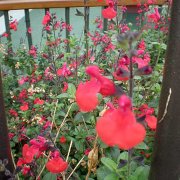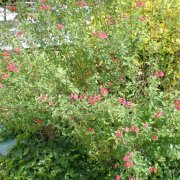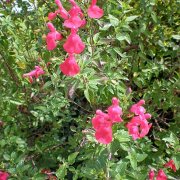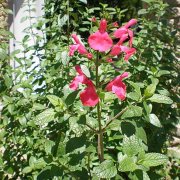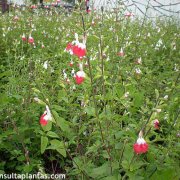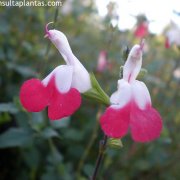Care of the shrub Salvia microphylla or Baby sage |
|
The genus Salvia, family Lamiaceae, comprises 1,000 species of shrubs and herbaceous plants native to Asia, Africa, the Mediterranean region, and Central and South America. Some species are: Salvia microphylla, Salvia mexicana, Salvia mellifera, Salvia leucantha, Salvia lanceolata, Salvia guaranitica, Salvia greggii, Salvia farinacea, Salvia disermas, Salvia canariensis, Salvia aurea, Salvia apiana, Salvia africana, Salvia scabra, Salvia namaensis, Salvia splendens, Salvia vaseyi, Salvia leucophylla, Salvia sclarea, Salvia nemorosa, Salvia officinalis, Salvia fruticosa, Salvia elegans. Common name: Baby sage, Graham's sage, Blackcurrant sage. This species is native to Mexico and Arizona. They are evergreen, erect and branched shrubs that reach 1 meter (3.28 feet) in height. The leaves are pale green and oval or triangular in shape. The flowers appear in clusters and are fuchsia pink, tube-shaped and bilabiated. They bloom at the end of summer and during the fall. They are used in borders, in rockeries, to form bushy groups, as isolated specimens and in pots for balconies, patios and terraces. Salvia microphylla needs full sun exposure. They do not resist frost. The soil must be well drained and light and fertile. These fairly drought-resistant plants need moderate watering while waiting for the soil to dry out. Prune at the end of winter intensively. They are resistant plants to the usual pests and diseases. They are propagated by cuttings in late summer. |
Images of the shrub Salvia microphylla or Baby sage |
Find plants
Salvia microphylla or Baby sage | Care and Growing
© 2024 FavThemes
